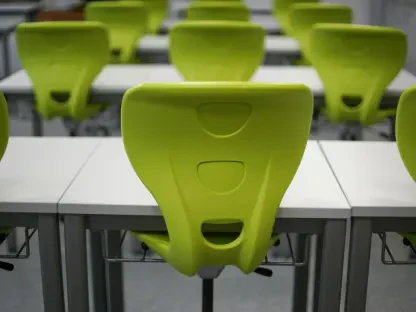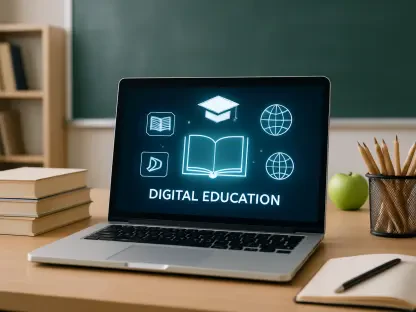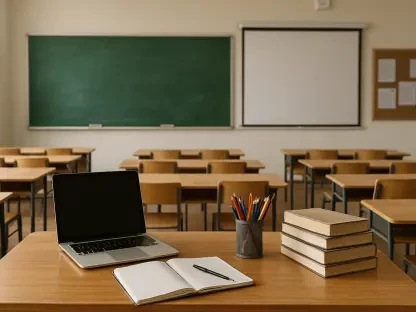Camille Faivre is an education expert with a focus on education management. After the pandemic, she has dedicated her efforts to supporting institutions in the development and implementation of open and e-learning programs. In this interview, she shares insights on the newly established Council for Student Safety and Well-Being and its first priority: implementing cell phone-free classrooms to enhance the learning environment.
Can you explain the mission of the Council for Student Safety and Well-Being and why it was created?
The Council for Student Safety and Well-Being was established to advance our state’s commitment to creating safer, more welcoming, and inclusive school environments. Our mission focuses on improving the physical, social, and emotional well-being of students. Recognizing the various challenges students face today, we aim to craft and recommend policies that can be adopted by local governments to promote a healthier, more focused learning environment.
What prompted you to prioritize cell phone-free classrooms as the council’s first task?
The decision to prioritize cell phone-free classrooms arose from the growing concern about the impact of mobile devices in educational settings. Cell phones can be significantly distracting, leading to a decrease in students’ attention and engagement in their studies. By addressing this issue first, we hope to foster an environment where students can concentrate better on their lessons without the constant pull of social media and other online distractions.
Why do you believe cell phones and social media are particularly damaging for young people in the classroom?
Cell phones and social media are designed to capture attention and can divert students from their primary task of learning. Instantaneous access to social media and other applications can lead to distractions, reducing the capacity for sustained concentration. Additionally, the presence of these devices can exacerbate issues like cyberbullying, anxiety, and disruptions, negatively affecting the overall classroom climate.
How do you plan to work with the General Assembly to implement policies for cell phone-free classrooms?
Our plan involves close collaboration with the General Assembly to craft and support legislation that requires school systems to implement cell phone-free policies. By presenting well-researched data and examples of successful implementations from other regions, we aim to demonstrate the benefits of such policies. We will engage in discussions, provide recommendations, and work to build a bipartisan consensus to ensure these policies become a standard practice across the state.
Can you tell us more about House Bill 87 and Senate Bill 55 discussed in the meeting?
House Bill 87 focuses on creating cell phone-free educational environments, while Senate Bill 55 targets the broader issue of eliminating the use of all wireless communication devices during classroom time. Both bills aim to reduce distractions, but they approach the problem from slightly different angles. Our discussions are centered on harmonizing their objectives to create a cohesive and effective legislative framework.
What are the main differences between the two bills?
The key difference lies in their scope and specificity. House Bill 87 is specifically designed to address cell phone usage within classrooms, setting clear guidelines and restrictions for students during instructional time. Senate Bill 55, on the other hand, takes a more comprehensive approach by banning all wireless communication devices, which could include tablets and smartwatches, ensuring a broader enforcement of the policy.
How would cell phone-free classrooms help students during a crisis in school?
In a crisis situation, having cell phone-free classrooms can actually enhance safety by ensuring that students remain focused on the instructions given by educators and emergency personnel. The primary concern in these moments should be following accurate and timely directions rather than attempting to contact others or gather information from potentially unreliable sources on social media.
What concerns have parents expressed about these policies and how is the council addressing them?
Parents have expressed concerns about being able to contact their children in case of an emergency. To address this, we are proposing the implementation of clear communication protocols and ensuring that schools have reliable ways for parents to reach their children through the administrative office. We aim to reassure parents that their children’s safety and ability to communicate during genuine emergencies remain priorities.
How might restricting cell phone use in schools help alleviate bullying among students?
Restricting cell phone use can significantly reduce instances of cyberbullying and the pressure associated with social media. Without the constant presence of phones, students are less likely to capture and share unflattering images or videos, which can be a significant source of bullying. This policy can help create a safer and more inclusive school environment, reducing anxiety and social pressures among students.
What challenges do you foresee in implementing and enforcing a no-cell phone rule in schools?
One of the primary challenges is gaining buy-in from all stakeholders, including students, parents, and educators. There may be resistance due to the convenience and perceived necessity of having immediate access to mobile devices. Additionally, ensuring consistent enforcement of the policy across different schools and districts will require robust guidelines and ongoing support for educators tasked with implementation.
Can you describe the process the council will follow to craft and propose these model policies?
The council will engage in a comprehensive review process, gathering input from educators, parents, students, and experts in child development and education. We will analyze data from regions where similar policies have been implemented and assess their outcomes. Based on this information, we will draft model policies and guidelines, which will then be refined through discussions and feedback sessions before being formally proposed to the General Assembly.
What kind of guidance do you plan to offer schools in carrying out the cell phone-free policy?
We plan to offer detailed guidelines that include both preventative and reactive measures to ensure effective implementation. This will encompass strategies for clearly communicating the policy to students and parents, training for educators on enforcement, and creating a supportive infrastructure for managing permissible scenarios where cell phone use might be necessary.
Are there examples of counties that have already adopted cell phone-free policies? What has been the impact?
Yes, several counties have implemented cell phone-free policies, and the feedback has been largely positive. These schools have reported improvements in student focus, engagement, and overall academic performance. Additionally, teachers have noted a decrease in classroom disruptions and instances of cyberbullying, contributing to a more positive learning environment.
Is there bipartisan support within the General Assembly for these policies? If so, who are some of the supporters?
There is indeed bipartisan support within the General Assembly for these policies. Lawmakers on both sides of the aisle recognize the importance of creating conducive learning environments free of distractions. By focusing on the well-being and academic success of students, we have garnered support from a wide range of representatives who see the long-term benefits of such initiatives.
How do you believe cell phone-free classrooms will ultimately impact students’ learning and focus?
Cell phone-free classrooms are expected to significantly improve students’ learning and focus. By reducing distractions, students can engage more fully with the curriculum and participate actively in classroom discussions. This focused environment helps in cultivating critical thinking skills and better retention of information, ultimately leading to improved academic outcomes.
What other priorities or potential policies will the Council for Student Safety and Well-Being address in the future?
While our immediate focus is on cell phone-free classrooms, the council is also looking at broader issues affecting student safety and well-being, including mental health support, anti-bullying initiatives, and inclusive educational practices. We aim to create a holistic approach to student welfare that addresses various aspects of their school experience.
When can we expect the council to submit its best practices to address cell phones in classrooms?
The council has a deadline of June 3 to submit its best practices. We are working diligently to ensure that our recommendations are comprehensive, evidence-based, and tailored to the needs of our state’s educational system. Our goal is to provide practical and actionable guidelines that schools can implement effectively.
How will you measure the success of these cell phone-free policies once they are implemented?
Success will be measured through a combination of qualitative and quantitative data. We will monitor changes in student performance, engagement levels, and incidents of bullying or disciplinary actions related to cell phone misuse. Additionally, feedback from teachers, students, and parents will be crucial in assessing the overall impact and effectiveness of the policies.
Do you have any advice for our readers?
My advice to readers is to remain open to new ideas and approaches in education. The landscape is continually evolving, and the methods that worked in the past may not be as effective today. Supportive and involved communities can play a vital role in implementing policies that improve the learning environment for our children.









